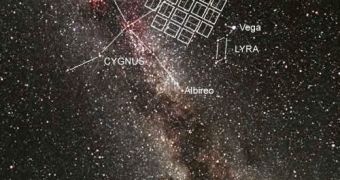At a conference held yesterday, February 2, officials at the American space agency announced new discoveries made by the Kepler planet-hunting telescope. The spotlight was grabbed by 54 exoplanets, which NASA considers to be potentially habitable
This considerably raises the odds that we may find a second Earth, but also that alien life similar to our own may exist at other locations throughout the galaxy. The Kepler observatory was constructed especially for this type of findings.
Experts said at the meeting that data sent back by the telescope propose the existence of at least 1,200 alien worlds. If these discoveries are confirmed in follow-up studies, then the total number of extrasolar planets we know about could be as high as 1,700+ by the end of the year.
Among all these candidates, the observatory was able to identify 68 that had a size, diameter and mass that were roughly similar to those of Earth. These are the main things astronomers are looking for during exoplanetary studies, Space reports.
“We went from zero to 68 Earth-sized planet candidates and zero to 54 candidates in the habitable zone – a region where liquid water could exist on a planet’s surface,” said expert William Borucki.
“Some candidates could even have moons with liquid water. Five of the planetary candidates are both near Earth-size and orbit in the habitable zone of their parent stars,” the official adds.
Borucki holds an appointment as the principal science investigator of the Kepler mission, and is based at the NASA Amer Research Center (ARC), in Moffett Field, California.
Thus far, it was widely believed that there were relatively few star systems out there with multiple planets, and also few small-scale worlds such as our own. The new discoveries show that to be false.
“What's incredibly interesting is that they're now going to give us a list of small planets. Some of them could actually be in what we call a habitable zone. If they were rocky or if they are rocky, they have a potential for being habitats,” added scientist Lisa Kaltenegger.
The investigator works at the Harvard-Smithsonian Center for Astrophysics (CfA), in Cambridge, Massachusetts. She made the announcement at the conference, where NASA also highlighted the discovery of a six-planet star system some 2,000 light-years away.
Studies conducted with Kepler may have to wait for a bit though. On February 1, mission controllers found the spacecraft was in safe mode, following an unknown glitch. Experts are currently hard at work to identify the problem and fix it.

 14 DAY TRIAL //
14 DAY TRIAL //